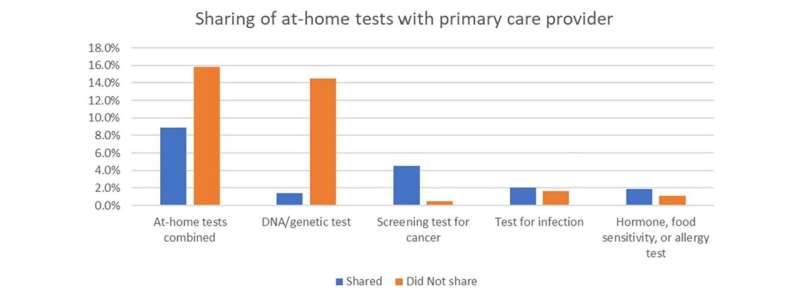A new study explores the use of at-home medical tests among older adults in the United States, revealing significant disparities in access and perceptions. The findings highlight the potential benefits of these tests, but also raise concerns about their impact on healthcare equity. At-home medical tests have become increasingly prevalent, with the COVID-19 pandemic further accelerating their adoption. This article delves into the insights from the University of Michigan National Poll on Healthy Aging, shedding light on the opportunities and challenges surrounding this emerging healthcare trend.

Convenience and Trust
The research finds that nearly half of older adults — 48% — have bought one or more at-home medical tests before, not counting free COVID-19 tests. Yet, among those who have taken a test, 91% of respondents would take one in the future. The reasons behind the high level of satisfaction among respondents included an overwhelming belief that 80% felt at-home tests saved them time compared to medical testing; 60% considered their test trustworthy and assured its accuracy; and, 75% believed it was a good value for the money.
The news for those who potentially could still make at-home testing their first choice is not as good. Three-quarters of this group said they were likely to try this sort of test in the future but on most other metrics only around 60 percent or even less responded that such tests were more convenient, trustworthy, or a good value. This suggests that attitudes and feelings about at-home tests could be very different for someone who is already using them.
All ADL/IADL Tasks; Discrepancies in Utilization
The survey findings also revealed some troubling failures of at-home medical tests. In fact, 56% of adults over the age of 18 with a college degree or higher, and 61% in households making $100,000 per year or more had bought at least one test (versus fewer lower down the education and income bracket).
Bought at-home tests were 53% of all white older adults and 46% their Hispanic and other races/ethnicities vs. just 36% of Black younger adults etc., respectively. Women were also more interested than men in purchasing an at-home test in the future, with 87% and 76% interest levels.
This discrepancy indicates that not all groups may have the same access to convenient at-home testing, which could further contribute to healthcare disparities and hinder public health efforts to address diseases or risks at earlier stages.
Understanding the regulatory landscape
The study did not find a notable trend of what people were doing with at-home DNA tests besides medical or ancestry-tracing purposes. But 16 per cent of older adults had bought those tests, with a greater percentage coming from college-educated (24 per cent) and higher-income (~22 per cent) people.
This raises critical questions about the regulatory landscape within the space of at-home genetic testing. That’s raised alarm bells among experts who fear that customers may lose control over what happens to the trove of genetic information generated by companies such as 23andMe, which is now struggling financially. As at-home testing evolves, it will be important for policymakers and healthcare providers to carefully navigate this space to ensure consumer protections and informed consents are respected.
Together, the findings of our study indicate that further investigation is needed to assess how at-home medical testing is being adopted, notably among those least likely to have access to health services. These parallel issues around disparities and regulation highlight areas where healthcare professionals and policymakers can act to promote equal access and informed decision-making by anyone looking for help with their health and well-being.
